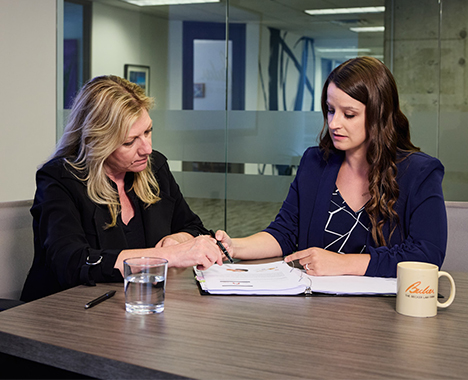Schedule a Consultation
216-621-3000Schedule a Consultation
216-621-3000
A life care plan is a tool used by lawyers to prove to a jury the types and amounts of services, products and medicines that a child will need throughout her life. But it is more than that—a life care plan is a blueprint for the parents—a tool created by doctors, nurses and certified life care planners to help guide the parents through a child’s life, helping them to make decisions about what the child needs in order to develop to her full potential. For a child with cerebral palsy, these life care plans sometimes require funding in the amount of five to fifteen million dollars.
Early on in a birth injury lawsuit, usually before the case is filed, the medical malpractice lawyers will contact a certified life care planner. The life care planner will be provided with a full copy of the child’s medical records from birth to the present. The life care planner will typically meet with the parents and the child at their home, and will communicate with the child’s physicians, therapists and even other expert witnesses.
Using that information as the foundation, the life care planner will analyze what the child will need throughout her lifetime. The life care planner will take into account the location where the child lives—the available services and their costs are likely to be very different between New York City and Sioux Falls, South Dakota.
When the plan is completed, the life care planner will provide it to the family and the lawyer to review. It will then be provided to the defendants as part of expert discovery, and will sometimes be marked as an exhibit and given to a jury at trial. The life care planner will testify on the witness stand about the plan, and will explain the goods and services that the child will need to live a productive life. The jury will then have the power to make changes to the life care plan—they can accept the life care planners assumptions (for example, the life expectancy of the child; or whether a parent will always be alive to care for the child), or they can substitute their own judgment.
A life care plan will include the medical and other needs of the child, which are dependent on that child’s unique circumstances. Just as no two children are alike, no two life care plans are alike. A child with cerebral palsy may have a life care plan that includes the following:
One of the most significant expenses in a life care plan is the cost of specialized in-home care. Life care plans often come with three options—one that includes care provided for free by a parent; one that includes care provided by a specialized home health aide (sometimes a certified nurse, where the child has demanding medical injuries); and one that requires the child to be institutionalized. The parents, understandably enough, will typically request that the jury provide a home health aide—this allows the child to remain in the home, and gives the parents the security of a trained medical provider who can help their child, particularly in the event of emergencies.
Importantly, these life care plans are meant to provide an outline of the care required over the child’s entire life—many of the child’s needs will change as she grows into adolescence and adulthood. For example, some victims of birth injury malpractice will require more specialized equipment as they get older—advanced electric wheelchairs, devices to help health care providers lift them in and out of the bathtub, and other innovations.
When completed, the life care plan is given to an expert economist. The life care planner outlines the total cost to fulfill the life care plan for the child’s expected life, but the economist will reduce that number to present day value. That means a child does not need all of the money at once—some of the money won’t be needed for another ten or twenty years. If the entire cost to fund the life care plan is $20 million, a smaller sum (invested conservatively) can grow into the full $20 million.
Present day value is important because the parents and the child have one chance. They will not be able to reopen their medical malpractice lawsuit when the money runs out. Whatever amount the jury decides they are owed for the medical mistake will have to provide for a lifetime of care.
When a jury rules in favor of the plaintiff, it is unlikely that the family will receive a lump-sum check for millions of dollars. That money will typically be deposited in a type of special needs trust, to guarantee that the money is used wisely and expended only for its intended purpose—namely, the care and well-being of the child. A special needs trust can also help to maintain governmental services for the child, keeping the money separate for expenses that the government cannot pay for.
A life care plan is dynamic document that will change as the child’s medical condition changes—it represents the medical team’s best understanding of the child’s present and future needs, but it should be updated on a regular basis. If your child has cerebral palsy, developmental delays, brachial plexus or brain trauma, contact our medical malpractice attorneys at (440) 252-4399 or online to find out how your child can benefit from an expert-crafted life care plan.

